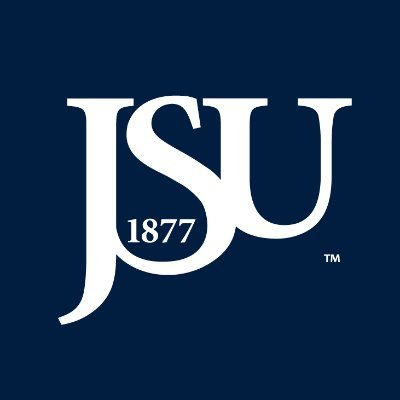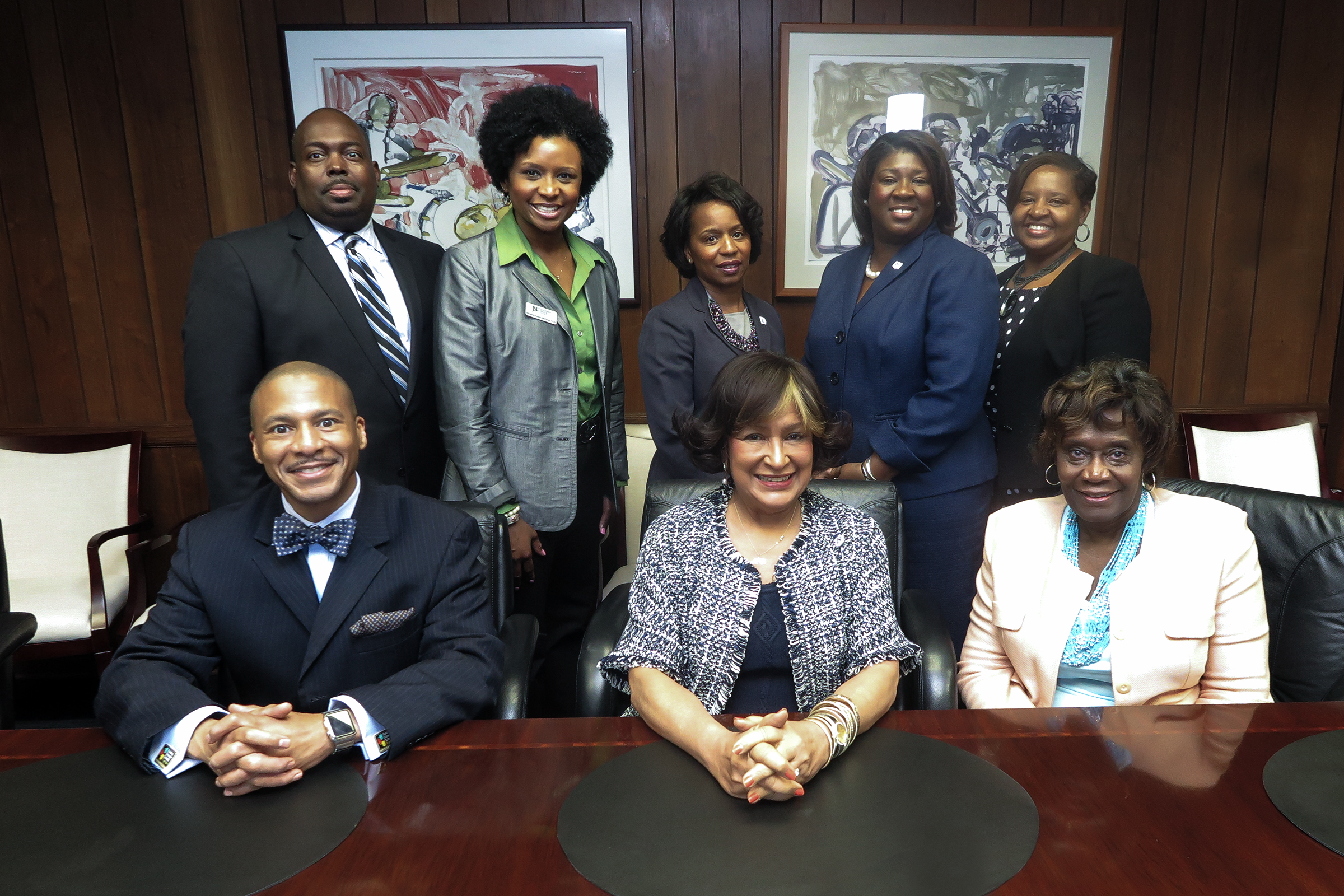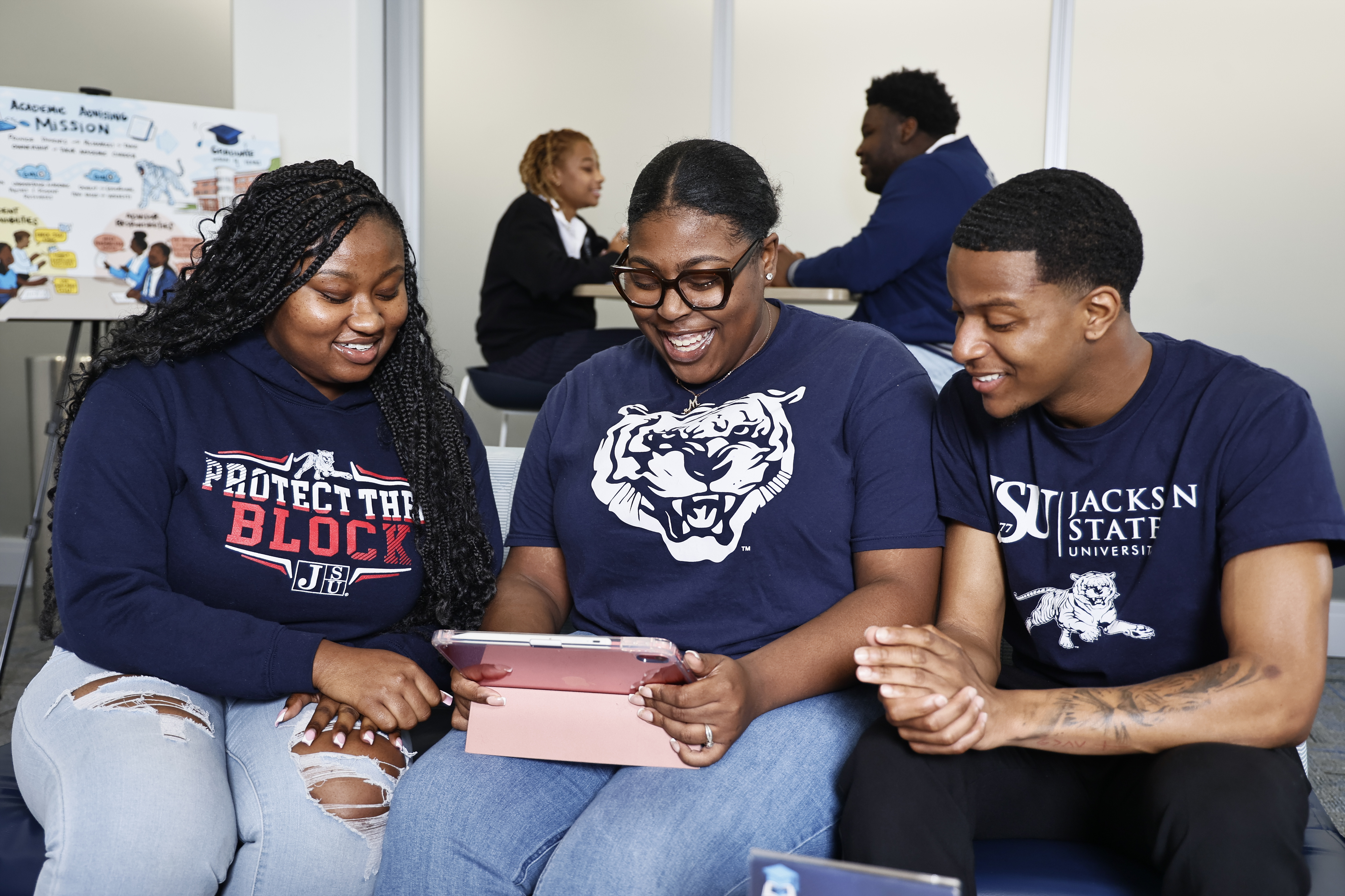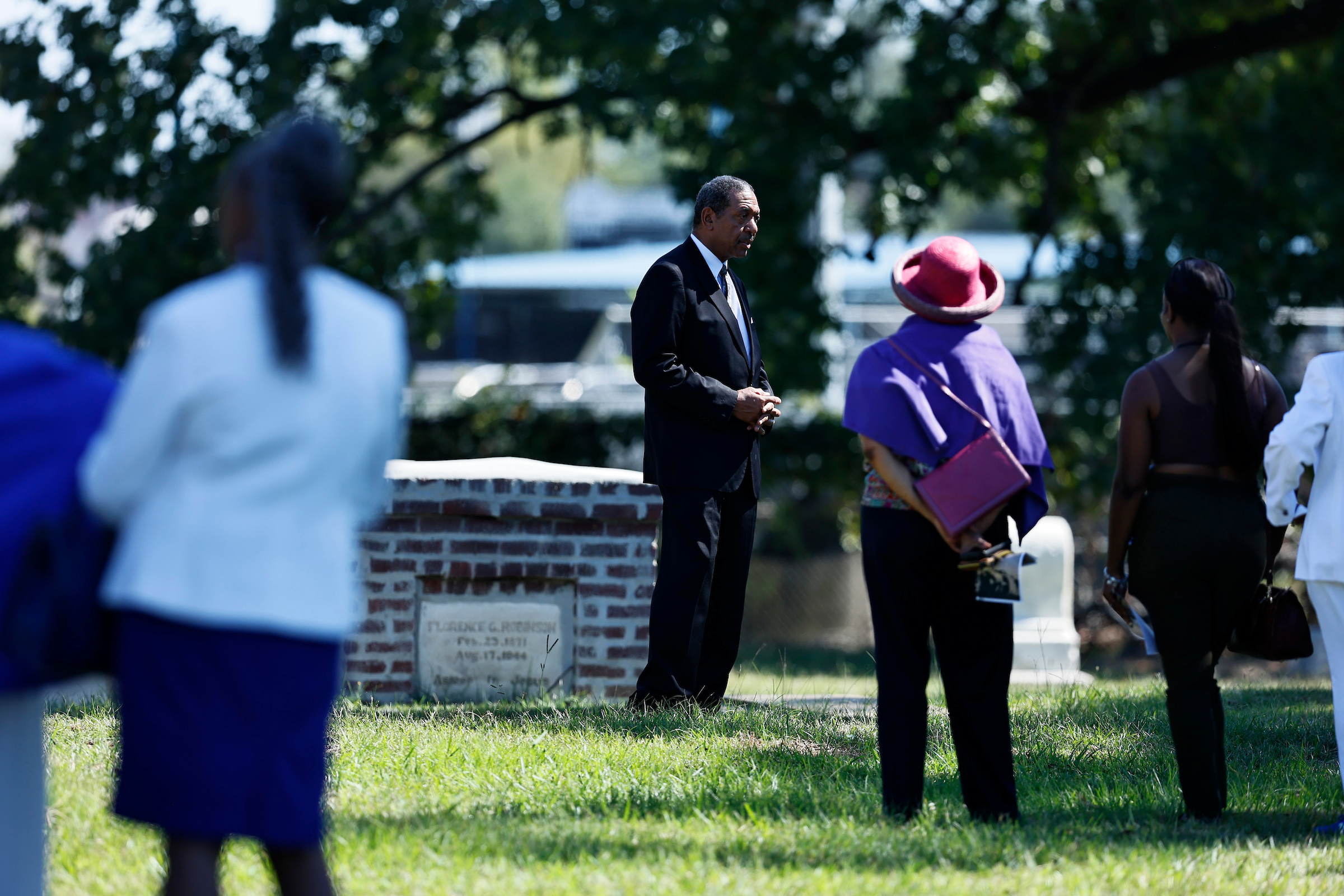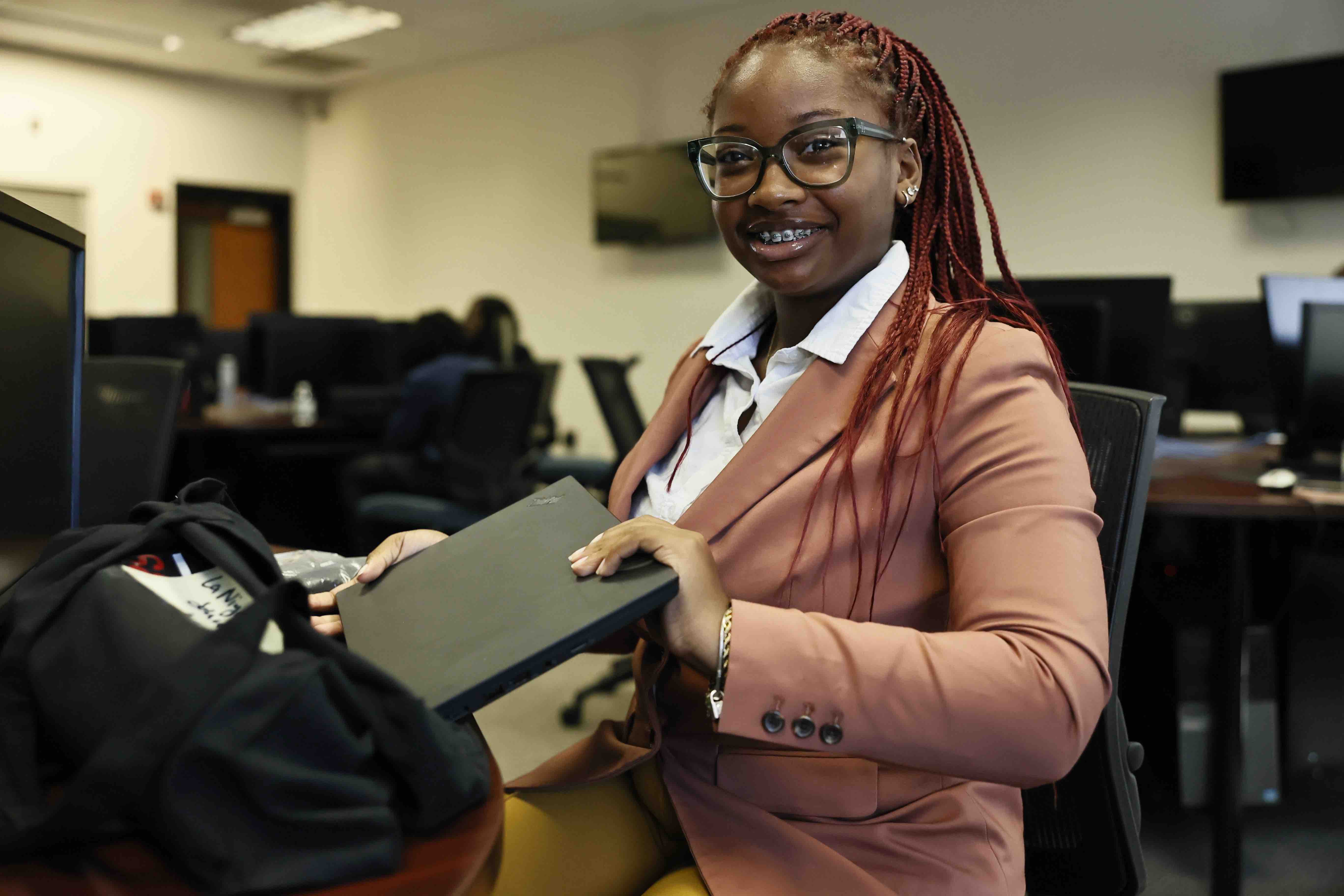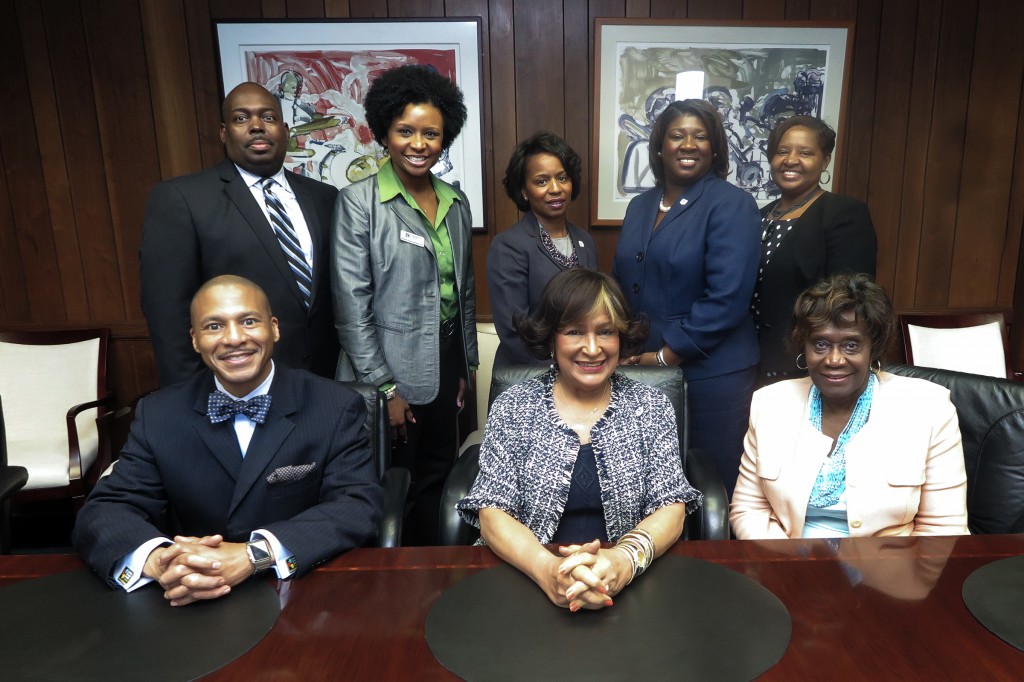
U.S. Department of Education experiment seeks to expand college access
For the first time, students taking college-credit courses will have access to Federal Pell Grants as early as high school. Jackson State University is the only public four-year HBCU to receive this award and one of only 44 postsecondary institutions nationwide to participate in this dual enrollment experiment launched by the U.S. Department of Education in support of the Obama Administration’s work to expand college opportunity. Jackson Public Schools is JSU’s partnering school district.
Dual enrollment, in which students enroll in postsecondary coursework while also enrolled in high school, is viewed as a promising approach to improve academic outcomes for students, particularly those from low-income backgrounds.
“This grant gets to the heart of the longstanding discussion of opportunity and affordability in higher education, both of which have been major impediments to access to a collegiate education for many students,” said Dr. Carolyn W. Meyers, president of Jackson State University. “I believe the results of this four-year experiment will prove to be productive to the economic well-being of the state and the nation.”
Dr. Cedrick Gray, superintendent of JPS, said, “We are excited about this opportunity for our scholars. It will better prepare them for their academic lives and societal roles.”
Speaking about the potential long-term outcome of this experiment, Dr. Evelyn Leggette, provost and senior vice president for Academic and Student Affairs at Jackson State said, “We know that earning a college degree can be a life-altering achievement. It is critical that we make the opportunity to earn a college education a reality for more of our qualified young people — regardless of income status. A better educated populace benefits us all.”
Dr. Nicole Evans, vice president for Enrollment Management and Institutional Research at JSU estimates this award will be about $1 million a year for four years. Evans said, “Jackson Public School students and parents know and understand that increased student achievement does not occur in isolation. It takes partnerships, such as this one, to ensure student success. The ultimate goal is to extend the pipeline from P-12 to P-16. We want students to not only complete high school, but to enroll and complete their bachelor’s degree as well.”
Innovation is an important underpinning in our efforts to expand college access and increase college completion for our nation’s students, said U.S. Under Secretary of Education Ted Mitchell.
“We’re thrilled these institutions have joined us in answering the President’s call to reimagine the high school experience and create stronger linkages to college coursework. These sites will help us learn how the availability of Pell Grants impacts participation and success in dual enrollment programs.”
JSU’s director of undergraduate admissions, Janieth Wilson-Adams, said, “Jackson State University is elated to have been selected as a participant in the Dual Enrollment Experiment. I am particularly excited about what this means for the students, who may not have otherwise had the opportunity to take advantage of dual enrollment courses. Our partnership with JPS will help ensure student access, as well as student success in their pursuit of a postsecondary degree.”
BY THE NUMBERS
This grant is a promising approach to improving college access rates, as well as college completion rates for students from low-income backgrounds. A majority of the schoolchildren attending the nation’s public schools come from low income families and unfortunately, Mississippi leads the nation, with 71 percent of students coming from low-income backgrounds. The cost of postsecondary continues to rise, and has created a barrier to access for many students.
The number of students in JPS who come from low-income backgrounds is nearly 90 percent.
In the 2010-2011 school year, more than 1.4 million high school students took courses offered by a college or university for credit through dual enrollment. A growing body of research suggests that participation in dual enrollment can lead to improved academic outcomes, especially for students from low-income backgrounds and first-generation college students.
Earning a college degree is an increasingly important step towards entering the middle class. Yet less than 10 percent of children born in the bottom quartile of household incomes attain a bachelor’s degree by age 25, compared to over 50 percent in the top quartile. Many high school students—especially those from low-income backgrounds—lack access to the rigorous coursework and support services that help prepare them for success in college.
As part of this experiment, an estimated 10,000 high school students will have the opportunity to access approximately $20 million in Federal Pell Grants to take dual enrollment courses provided by colleges and high schools throughout the nation. Nearly 80 percent of the selected sites are community colleges.
Research suggests that participation in dual enrollment can lead to better grades in high school, increased enrollment in college following high school, higher rates of persistence in college, greater credit accumulation, and increased rates of credential attainment.
ACCESS AND SUCCESS
Many of the institutions invited to participate in this experiment proposed dual enrollment arrangements that share some key features designed to make students successful in college and career. Some of these features include:
- Academic preparation and credit accumulation: These programs ensure that students meet academic requirements, keep their grades up, and are engaged in a quality curriculum. They also increase students’ college-readiness by offering a minimum of 12 credits worth of courses, which can allow students to earn about a full academic semester’s worth of college credits toward their postsecondary credential.
- Advising and other support services: Most of these programs provide students with access to personalized academic advising or guidance counseling. These services help guide students in taking courses most relevant to the postsecondary credential they are seeking. Many programs also provide tutoring and other services designed to better prepare students for the rigors of postsecondary education. Additionally, participating institutions and their secondary school or school district partners will commit to assisting their dual enrollment students with completing the Free Application for Financial Student Aid (FAFSA) to determine their eligibility to receive Federal Pell Grants.
- Pathways to further their studies: All students participating in dual enrollment arrangements are one step ahead in their pursuit of a postsecondary credential. Many of the programs selected for participation create clear pathways programs for their dual enrollment students to continue their studies at the postsecondary institution and/or transfer the credits they’ve earned to other institutions of higher education in the local area.
- Providing a teaching foundation for STEM and alignment with workforce needs: Many of the selected programs help students get a foundational education that will prepare them to succeed in college and their careers. Some examples of the focus of these programs support students in developing the critical-thinking skills and foundational knowledge for STEM fields and others that align with local workforce needs including: advanced manufacturing, machining, welding, aviation, health sciences, software engineering, computer information systems and business computer applications.


